Do you know that growing crops in soil comes with loads of risks for the growers? Yes, you heard that right! Invading weeds cause a set of soil-borne diseases. But hydroponics farming lets us mitigate those risks. You must be thinking how? Well, we are here to tell you. We can use different kinds of growing mediums in place of soil to keep those diseases at bay.
If you are all set to start your very own hydroponics garden, then there may be things you may be worried about. For starters, where do I begin? Multiple components make hydroponics gardening a success. And today, we will walk you through all the steps of starting a hydroponics farm. So let us dive right into the article because the in-depth information we are about to share may benefit you beyond measure.
STEP- 1 Choose and start your seeds and plants
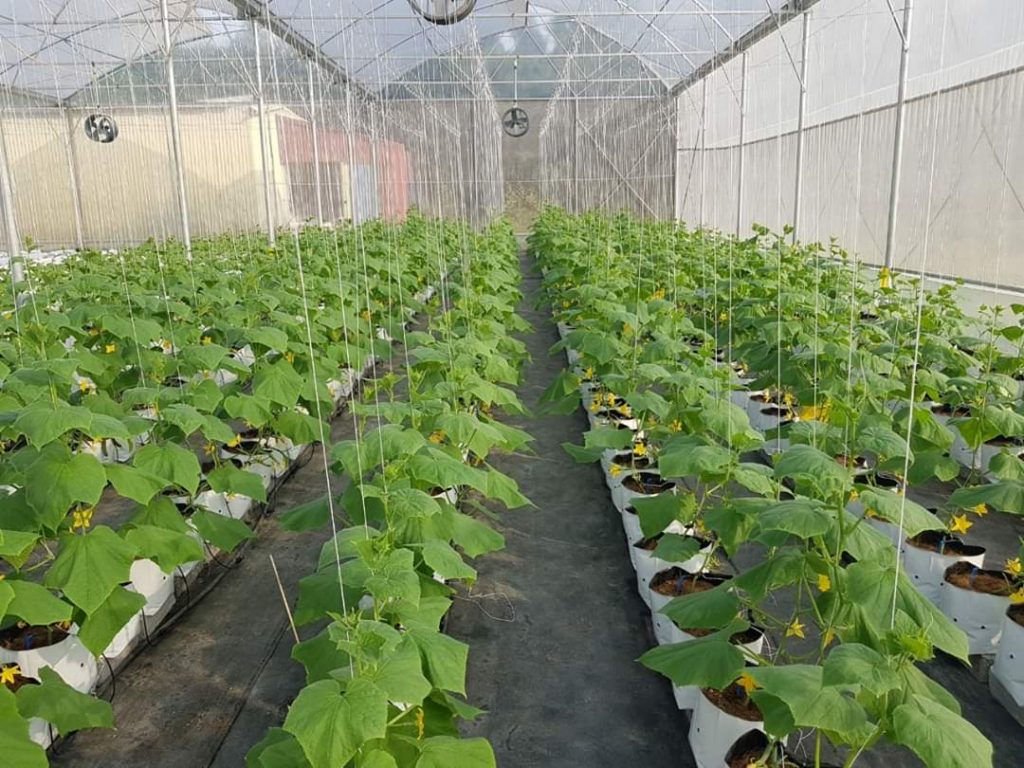
The very first thing to begin a hydroponics farm is to decide on the type of plants you want to grow. This decision of yours determines the kind of hydroponics system you can use. It also helps you decide the kind of lighting and the area of space you may need. Different hydroponics setups/systems outdo the others for some of the plants.
If you are a first-time grower, then we recommend growing leafy greens. You can use rapid rooter cubes for seed germination. We believe that these plugs will make your process easier by enhancing the germination rates. These plugs will also promote a healthful root system.
You can grow anything with hydroponics but let us have a closer look at the top plants you can grow with hydroponics.
Herbs
There are different kinds of herbs that grow wonderfully in this soilless farming method. Studies have proved that hydroponics herbs are a lot more aromatic and flavorful than the ones grown in soil. Are you wondering what herbs you can grow? Watercress, thyme, rosemary, parsley, oregano, mint, dill, cilantro, chives, and basil, you name it. To test out your new hydroponics setup, we say go for herb production, as nearly every system is ideal for herbs.
Grow time:
Varies from plant to plant
Best pH:
Varies from plant to plant, but here are some values:
Basil: 5.5-6.5
Chives: 6.0 Mints: 5.5-6.5
Pro tip: flush the growing medium once a week. That will help in getting rid of additional nutrients that the plants have not absorbed.
Varieties: Basil, mints, chives, rosemary, thyme, and oregano
Bell peppers
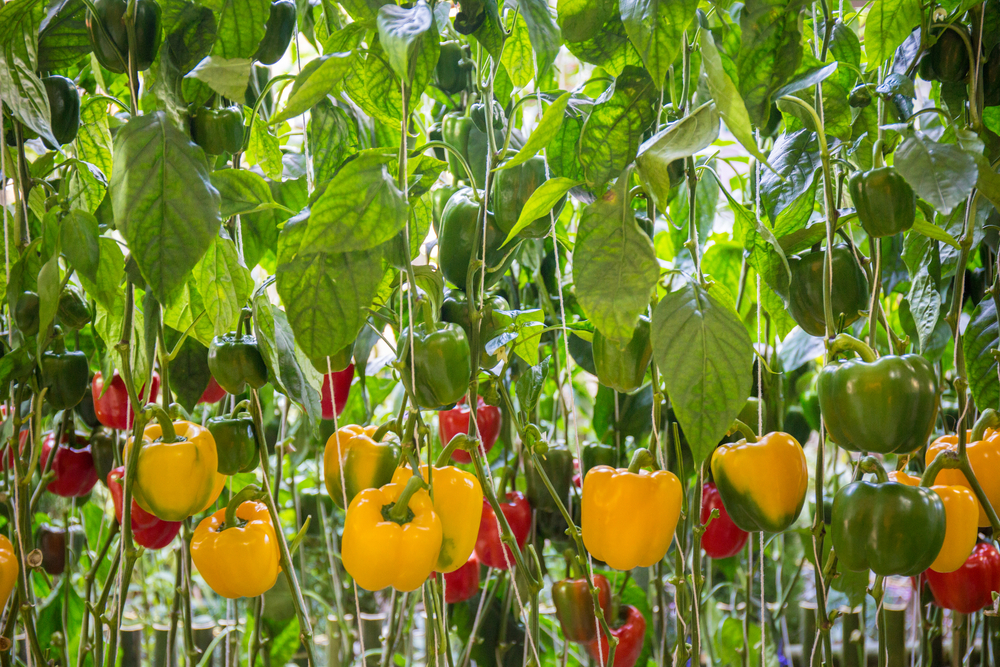
The most advanced hydroponics plant has to be bell pepper. We say do not let the peppers grow to their optimum height; instead, pinch and prune the plants at around 8 inches to spur the growth. Ebb and Flow and Deep Water culture are perfect for peppers.
Grow time:
Around 90 days
Best pH:
6.0-6.5
Pro tip: Provide at least 18 hours of light and keep raising the light rack as the plants keep growing. Keep a distance of 6 inches from the grow lights.
Varieties: Yolo Wonder, Vidi, California Wonder, and Ace.
Strawberries

Strawberries are seasonal. But, with hydroponics, you can have ready-to-eat strawberries all through the year. Harvesting is extremely convenient as you do not have to bend over. This fruit thrives well in a nutrient film technique (NFT), deep water culture(DWC), an ebb & flow system.
Grow time:
Around 60 days
Best Ph:
5.5-6.2
Pro tip: Do not buy seeds. Rather, go for cold-stored runners to begin farming.
Varieties: Tioga, Red Gauntlet, Chandler, Brighton, and Douglass
Spinach

In a hydroponics system, spinach grows the fastest. Use a Nutrient Fim Technique (NFT) or any other method that keeps the nutrient solution extremely oxygenated. You can start growing spinach from seeds, and after they sprout, you can transfer it into your system.
Grow time:
Around 40 days
Best pH:
6.0-7.5
Pro tip: Maintain the grow temperatures in the range of 65 degrees F – 72 degrees F to obtain sweeter spinach.
Varieties: Red Cardinal, Tyee, Catalina, Regiment, Smooth Leafed, Bloomsdale, and Savoy
Lettuce
If you are a beginner, then the safest plant to try in a hydroponics setup has to be lettuce. They have shallow roots, and you do have to tie any stakes or set guides. All you have to do is let them grow while changing the nutrient mix regularly.
Grow time:
Around 30 days
Best pH:
6.0-7.0
Pro tip: stagger the plantings so that you have lunchtime lettuce in constant supply.
Varieties: Bibb, Buttercrunch, Iceberg, Boston, and Romaine.
Tomatoes
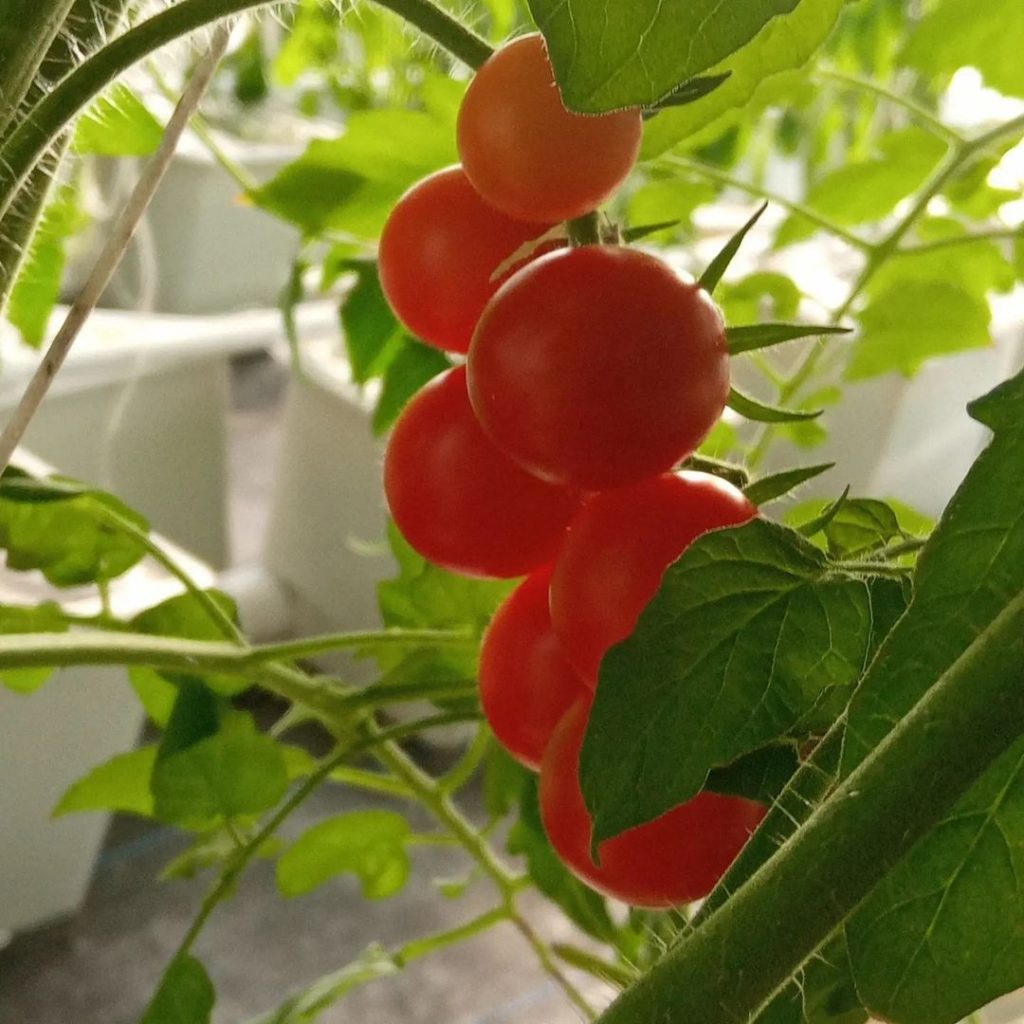
You can grow tomatoes of any kind under a hydroponics system, right from cherry tomatoes to the traditional ones. Botanically, it’s fruit and requires a lot of light. It is crucial you maintain a pH of 5.8-6.3 and EC between 3.0-3.5 millimHos.
STEP-2 Decide on the hydroponic system
The second step towards starting your hydroponics farm is selecting the hydroponics system. There are different kinds of hydroponics systems you can choose from. No matter what you choose, ensure that you take some time to learn about each method. Some factors that go into selecting the ideal hydroponics system are as follows:
- Plant types
- Space amount
- The budget
- The amount you desire to grow
We recommend you start small as you can always make expansions in the future. When you are learning, too many plants, all at once, can get overwhelming.
STEP-3 Select a light source
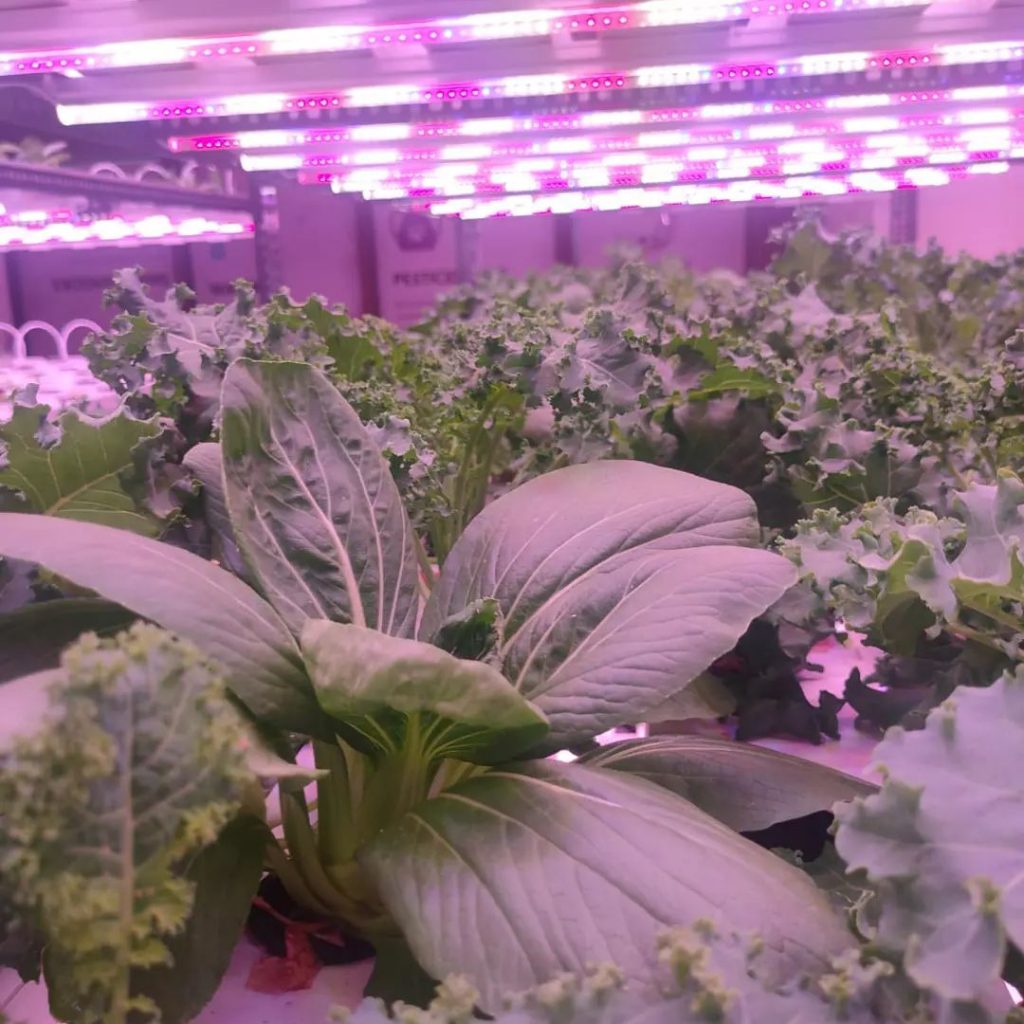
Proper lighting is a principal factor if you want your hydroponics farm to be a success. If you choose not to take the sun as your source light, then you need a grow light for your hydroponics system. We recommend getting one from Rise Hydroponics as you can get the full-spectrum high-efficiency LED white grow light.
There are a few deliberations when selecting the best light for your hydroponics system. That is because there are many kinds of grow lights that have their disadvantages and advantages. Do your research in finding the best light setup that works perfectly for your garden. Here are some things that you will have to consider when choosing a grow light:
- The coverage area
- Light spectrum
- Light intensity
- Cost
Do not take the cheapest route on lighting. Instead at the very start, begin farming using a full-spectrum LED grow light. They are cheap, can grow fruits and leafy greens, besides are pretty efficient as well.
STEP-4 Choose a growth medium
When starting your hydroponics garden, determine the kind of growth medium you desire. Decide on the best system for you and the growth medium type depending on the plant types you will grow. Several kinds of growing mediums offer several advantages; however, when choosing a growth medium, consider the pH stability of the medium, the aeration levels, water retention, and cost. Here are some types of growth mediums you can consider.
Hydroton Clay pebbles
The clay pebbles are one of the popular media to use in a hydroponics system. They are made by clay expansion to form rounds balls of the porous material. They release no nutrients into your water system, are spherical and porous. The porous pebbles ensure an outstanding oxygen/water balance so as not to overly drown or dry the pots. You can use hydroton in net pots of all sizes for DWC, NFT, and various others.
Cocopeat
Coconut fiber is called cocopeat. These powdered coconut husks are organic fully organic media that have ample water and oxygen capacity. That means if anything goes wrong in your system, your plants always have a chance to survive.
Rockwool
This popular growth medium is derived from basalt rock that is melted and later “spun” so that the material converts into interconnects fibers. Rockwool has a commendable water-retention capacity which means that if your water pump fails, your plants will still get water. They can hold a lot of air, which means your plants will not get excess water.
Perlite
One of the best hydroponics planting mediums has to be perlite. We say that because of its inert nature, porosity, and lightweight. It is made by heating glass flakes (silica) until it enlarges like popcorn. This medium has excellent water-retention properties.
PRO TIP- Whenever you choose a growth medium, keep these three acronyms at the back of your head; CEC, AFP, and WHC. WHC is the water holding capacity which signifies how well the medium can hold water. AFP stands for air-filled porosity, which is the volume proportion that air-filled. CEC stands for cation exchange capacity. That refers to the ability of the medium to catch positive ions of magnesium, calcium, and potassium. In any hydroponics system, low CEC permits you to have great control over the nutrients your crops get.
STEP-5 Purchase supplements and hydroponics nutrients
There are many kinds of nutrients that arrive in 1,2,3 part systems. For beginner growers, we recommend using a part 1 nutrient solution for flowering, blooming, and vegetative growth. There are several online stores that will u provide you with all kinds of setups, supplements, and nutrients for hydroponics farming. There are different supplements you can add to boost the plants’ growth rate, flavor, and overall size.
STEP-6 Purchase a pH Up/down and pH Meter
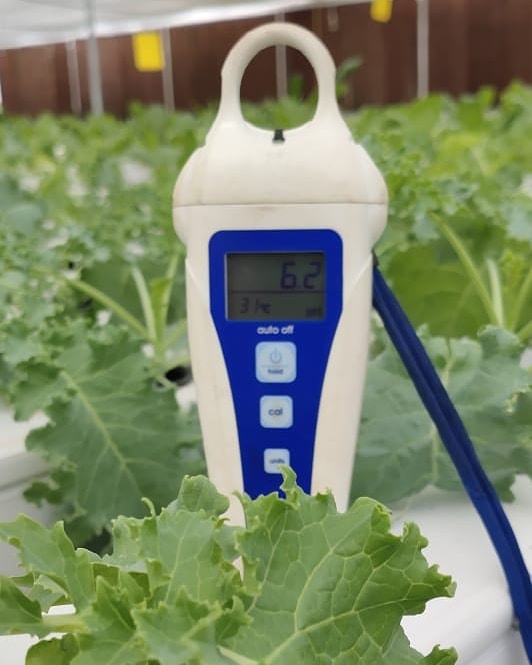
In a hydroponics system, plants can absorb nutrients within a particular pH range. Get hold of a pH meter to regularly test nutrient solutions’ pH. You can get an electronic meter, test strips, and a liquid kit. You must also buy a pH down and pH up for your nutrient solution. It is great to always correct any spikes or dips before nutrient lockout takes place.
STEP- 7 Move into an automated IoT based Hydroponics system

IoT plays a significant role in the process of automation. Automating your hydroponics system can be easily done by the integration of IoT into the hydroponics system. For the entire automation process, the cloud database functions as the hub. This database will contain all information about your hydroponics system besides data retrieved from water tanks and crops.
Actuators and sensors are used for automating the hydroponics system. Cloud database receives the sensor values from which you get updated with information in real-time about the condition of crops. You can adjust the sensors’ and actuators’ configurations from the developed mobile app.
The mobile application will have specifications about your hydroponics system alongside your unique password and login ID. Thus, you can operate your crop field with your registered ID and select seeds for plantation without interruptions. You can control the water flow from one tank to the other with solenoids and water-level sensors.
Captured images of the plants will get uploaded to the cloud, which will help you verify the plants’ health condition. And, if any health problems surface, you can control your nutrient tank just so that more nutrients make it to your crop bed. With an automated IoT-based system, you can grow healthy, disease-free crops.
CONCLUSION
The key to getting a successful hydroponics garden is planning things. Spending time for up-front planning can save both money and time for you in the long run. Opt for the best grow lights, get the perfect nutrient mix, decide the ideal hydroponics system and go for it. We hope these detailed steps help you succeed with your hydroponics garden and save you money and time. If there is anything, you would like us to add, please let us know in the comments below.

